Written By:
Will Purcell
If your organization utilizes the inbound marketing methodology, then you understand the importance of regularly publishing content to your website. That’s because content acts as the guide that nurtures leads through their journey to select a product or service.
Content, however, is not stagnant. In fact, the most successful strategies incorporate a regular internal review of content leveraged against the latest search trends and updates. The goal of this practice is to stay afloat with the ever-changing needs of your audience, as they conduct searches online to find solutions to their challenges.
The best way to reveal the areas where your content serves an audience well, and the areas it could improve, is by conducting a content gap analysis. Below, we take a look at what content gap analysis is, outline why it’s important, and provide 8 essential steps to include when conducting one for your organization.
What is a content gap analysis?
A content gap analysis is simply the process of analyzing a library of your content, within a campaign or otherwise, to find any missing information that your audience wants, but you currently do not have.
Organize your Content with our FREE Editorial Calendar Template
Why is a content gap analysis important?
Performing a content gap analysis is important for three critical reasons:
1. Strengthening Existing Content
A gap analysis sheds light on the pieces of content that are performing well while revealing opportunities for growth. This could include optimizing existing content to stay relevant with both your competition and the current trends in search results.
2. Mapping Future Content Plans
As you prepare for a new campaign or content push, performing a gap analysis can help plan and outline your strategy. For example, a gap analysis can identify any areas or topics that previous campaigns might have missed, which can (and should) be included in outlining future content.
3. Connecting With Your Audience
A gap analysis reveals whether your existing content provides answers to the questions your audience is asking online. Not only is this a central component of the inbound methodology, but it’s also a great way to build trust with your audience while facilitating their journey through the sales funnel as well.
When should you conduct a content gap analysis?
While it’s true that each organization will have their own unique approach to optimizing and strategizing new content, it’s typically a good idea to perform a content gap analysis following these scenarios:
- Every time a campaign or content push is completes
- At the end of each quarter
- At the end of each year
- When a new update greatly shifts the landscape surrounding a topic
- Following any dramatic rise or fall in search rankings for your content
- After or during each content audit
Granted, there are always special situations or circumstances that might require a full in-depth analysis of your content. But generally speaking, performing a gap analysis following any of these scenarios is a good exercise to keep your content fresh, timely, and relevant.
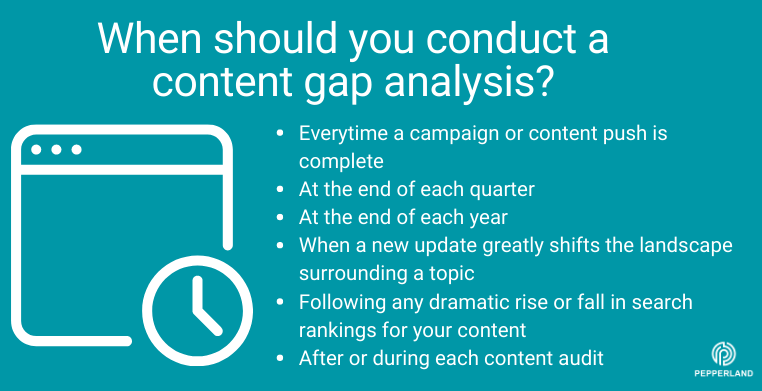
Conducting a Content Gap Analysis
When it comes to conducting a content gap analysis for your marketing efforts, there are several tools, tips, and techniques you can use to ensure success. We’ve listed a few of these elements below, which includes a step-by-step guide for conducting your own content gap analysis.
Content Gap Analysis Tools
Fortunately for marketers, there are several tools you can use to conduct an effective analysis. We’ve listed some of our favorites below to help narrow your research.
1. SEM Rush
The keygap tool by SEM Rush offers a great resource for analyzing how your content compares to the competition. With keyword profiles available for 5 competitors, you can easily review the keywords your competitors are ranking for and compare it to your own content.
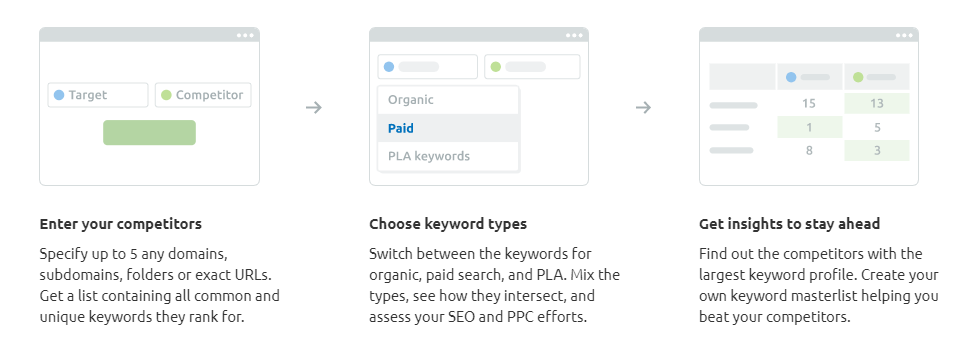
2. Ahrefs
Similar to SEM Rush, Ahrefs offers a content gap tool that evaluates keywords for both you and your competition. Specifically, Ahrefs offers a comprehensive list of keywords with multiple filters allowing you to target topics or keywords you currently do not rank for, but should pursue.
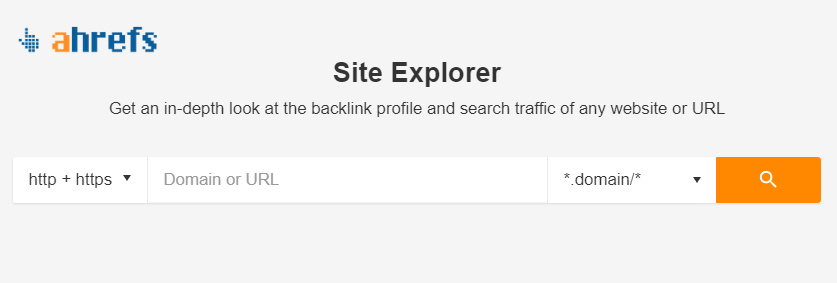
3. Google Analytics
Google Search Console provides a detailed view of your content and analyzes information that could be helpful for a content gap analysis, or for an SEO gap analysis. This is especially helpful for measuring ROI, as users can review content to find the total number of clicks and impressions over a given period time.
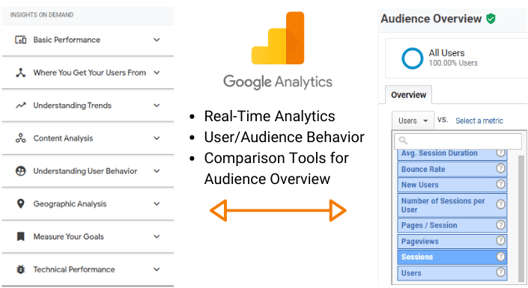
4. SEO Minion
SEO Minion is an easy-to-use tool that you can quickly access to discover keywords, SERP previews, on-page SEO, and broken links for web pages. Working as a Google Chrome extension, SEO Minion works as a helpful “on-the-go” tool that’s available on your toolbar.
5. Keywords Everywhere
Like SEO Minion, Keywords Everywhere is a Google Chrome Extension that’s easily accessible to review search volume, CPC, monthly trends, and competitor analysis for web pages. The extension also offers a “related keywords” and “long-tail keywords” list in search results for search queries.
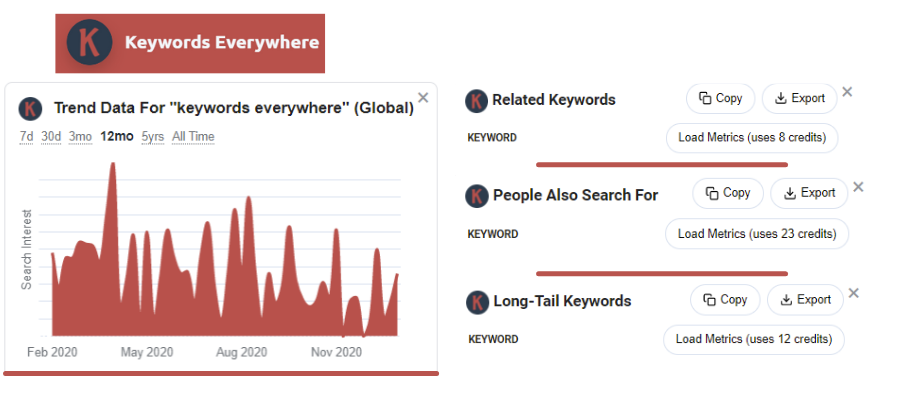
6. Your Editorial Calendar
An editorial calendar is arguably the most important, yet overlooked tool to utilize in a content gap analysis. That’s because an editorial calendar is more than just a scheduling document. In fact, it can be used for several functions that directly impact your content marketing strategy. Find out how you can utilize an editorial calendar for your campaigns by downloading our free template here.
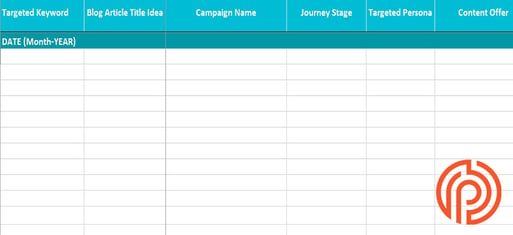
8 Steps To Include In Your Content Gap Analysis
Using the resources and tools provided above, you can begin to conduct a successful and meaningful content gap analysis for your website. And while each marketing team may differ in their unique approach to understanding any potential gaps in their content, it’s generally a good practice to keep the following steps in mind when conducting a content gap analysis.
1. Set SMART Goals for your content strategy.
When it comes to determining the success of your content marketing strategy, utilizing SMART goals is a great way to measure results. That’s because SMART goals use a framework that’s not only easier to understand, but is also aligned with your larger strategic objectives.
To that point, by using SMART goals, your content marketing team can have a better understanding of what they should be doing, how they should do it, and how to know when it’s done. This, in turn, makes it easier for you to adjust your strategy as you progress through a campaign, so that the highest possible ROI can be achieved.
2. Understand your audience by creating an ideal persona.
Simply put, a content marketing campaign will never achieve success if you don’t know who you’re creating content for. That’s where personas can help. These semi-fictitious representations of your ideal customer (or, in this case, your ideal audience) are based on market research that highlights user behavior, such as demographics, motivations, and goals.
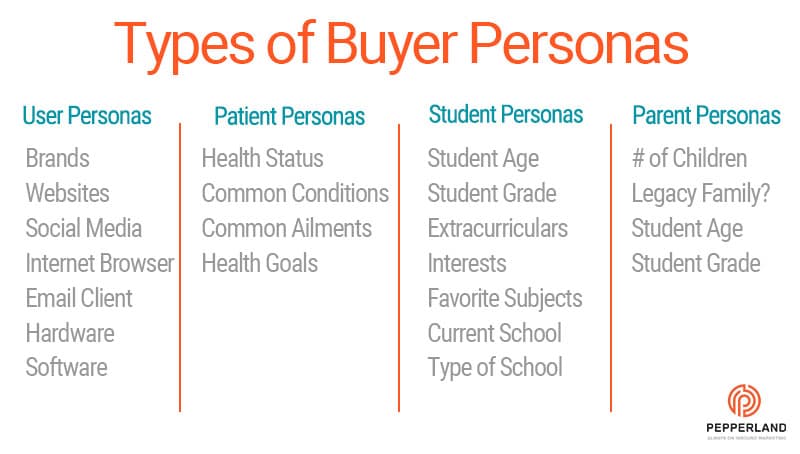
Essentially, creating personas for your content marketing campaign helps you determine what content to produce, so that messaging reaches the right customers with the specific needs and concerns they’re searching for online.
Need help with your persona research? Check out these resources:
- Buyer Persona Template: What Goes Into a Great Persona
- Student Persona Interview Guide: 40 Questions to Ask
- How to Build Buyer Personas to Attract the Right Customers
3. Audit your content using an editorial calendar.
Taking a detailed look at your existing content is the central foundation for any content gap analysis. Even if you don’t regularly publish a blog, you’re likely to have other forms of content online, such as CTAs, newsletters, eBooks, infographics, or photos (to name a few). And, by using an editorial calendar, you can review all of your materials in one, centralized location that’s easily accessible.
The key to using an editorial calendar for a content audit is to use a calendar that’s SEO-driven. An SEO-driven editorial calendar provides the framework for developing a solid content audit by including certain terms and elements you’ll need to produce the most accurate results. For more information on conducting a content audit with an editorial calendar, check out our guide!
4. Review technical SEO for your website and your content.
When it comes to content on your website, you simply cannot afford to overlook any aspect of technical SEO. Even if you create the most in-depth, thorough guide on a topic and fill it with compelling graphics and value that blows your competition out of the water, if you have poorly optimized on-page elements, your rankings will suffer.
Updating and testing different changes to these elements could help you improve your rankings. And, given the importance of technical SEO, these changes could have the most influence in bridging gaps for your content and increasing ROI overall.
5. Research your competition.
Researching your competitors is a key aspect of virtually any successful marketing strategy, regardless of the industry. The same can be said for a content gap analysis, as this research can not only reveal a great deal about your competition, but it can also reveal the areas of needed improvement for your strategies as well.
For instance, is there a piece of content from a competitor that ranks well? Why is that? Do they provide information for users that you currently do not have? If so, how can you incorporate that information into your strategy? In doing so, could this help to fill any content gaps? These are all relevant questions to ask when researching your competitors.
6. Review the recent search trends.
Similar to technical SEO, reviewing search trends can have a profound impact on your content strategy. That’s because these trends help to identify what your ideal persona is asking about online.
A good practice is to reference your persona research when reviewing search trends. Are there any new topics your persona is now asking about? What about older topics? Have there been any significant updates or changes since your campaign began? These are important questions to ask when leveraging search trends to close any gaps in your content. It’s also important to remember that persona research, like content, is always evolving and adapting to the latest user needs and challenges.
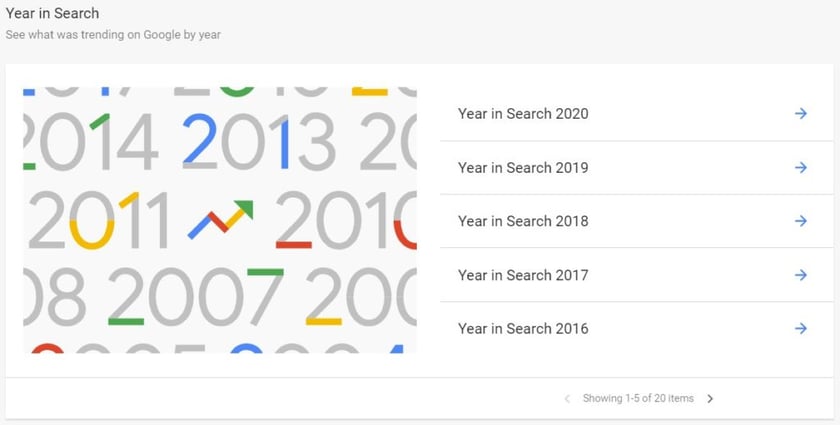
7. Make sure content is facilitating the buyer’s journey.
Facilitating the buyer’s journey is arguably the most important aspect of content creation. This is especially true when utilizing the inbound marketing methodology. Remember, content should work as a guide to nurture leads as they seek answers to questions they’re asking online.
Content should empathize with their problems, help provide solutions, and in doing so, promote your services as a valuable, trusted resource. If your content lacks any information that could otherwise help facilitate the buyer’s journey, it should be corrected and updated immediately.
8. Ask for feedback.
Gaining feedback is always helpful for marketers to understand what is or isn’t working with their current strategies. It’s also a great way to collect ideas for future topics, which can and should be leveraged for finding gaps in your content.
Some common tools you can use for feedback include surveys, social media outreach, email marketing, and even face to face interviews. As previously mentioned, it’s important to consider your audience and buyer’s journey when reaching out for feedback. For the best practice, consider their input and make adjustments to current and future content as needed.
Other Resources:
- How to Create An Editorial Calendar
- Editorial Calendar Templates
- How to Create a Social Media Schedule Using an Editorial Calendar
- How to Create an Editorial Calendar for Schools
- 5 Goals Your Content Marketing Should Serve
- How to Manage an Editorial Calendar
Identify Gaps in your Content by Downloading our Editorial Calendar Template
As you can see, there are several ways to conduct a content gap analysis. However, before launching a gap analysis, it’s best to ensure your editorial calendar is both organized and accurately reflects your campaign goals. This is especially important considering an editorial calendar has multiple functionalities when it comes to optimizing content for your website.
To get started, download our free editorial calendar template, which contains the structure, foundation, and tools needed to audit your content and identify any gaps that may exist. With the proper editorial calendar in place, your marketing team can establish a solid content strategy that’s fully optimized to best serve the needs of your personas and audience.







